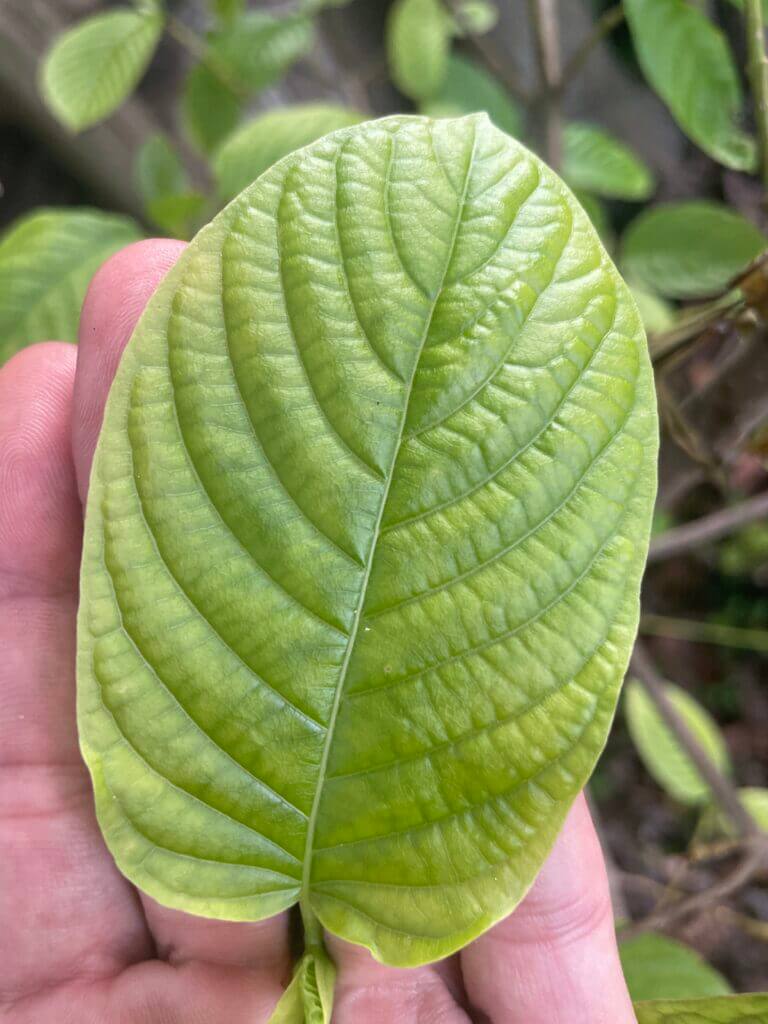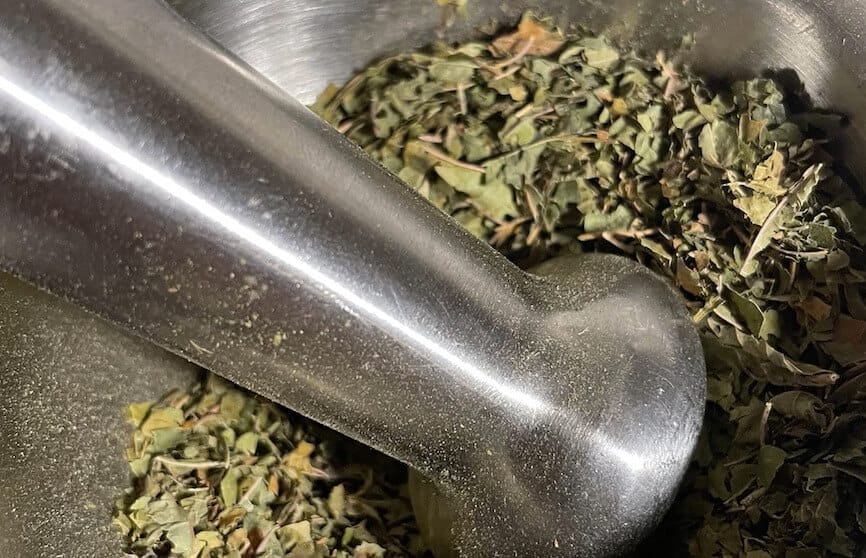A LITTLE GUIDE TO KRATOM TREES
Kratom, scientifically known as Mitragyna speciosa, is a fascinating tropical tree native to Southeast Asia. In this comprehensive guide, we will explore the process of growing and harvesting kratom trees, their maturity for harvest, suitable climate zones, indoor cultivation methods, traditional usage, and the legal climate surrounding this remarkable plant.

Understanding Kratom Trees:
Kratom trees are evergreen plants that belong to the Rubiaceae family, making them distant cousins to the coffee plant. They can reach heights of up to 80 feet in their natural habitat and have smooth, greyish bark. The leaves of the kratom tree are the primary focus, known for their potential properties.
Maturity and Harvesting:
Kratom leaves go through a maturation process before they are ready for harvest. Typically, it takes around 3-5 years for a kratom tree to reach maturity. However, the alkaloid content of the leaves is an important consideration rather than relying solely on age. The key alkaloids, mitragynine and 7-hydroxymitragynine, may develop over time.

To harvest kratom leaves, select mature leaves with a vibrant green color. Gently pluck the leaves from the lower branches, as they tend to be richer in alkaloids. It’s important to leave some leaves on the tree to support its overall health and growth.
Kratom Climate Zone and Growing Conditions:
Kratom trees thrive in a tropical climate, typically in hardiness zones 10-12. They prefer a combination of warmth, humidity, and ample sunlight. These trees require well-draining soil rich in organic matter and a consistent moisture level.
Growing Kratom Trees Indoors:
While kratom is primarily grown outdoors, it is possible to cultivate these trees indoors with proper care. Here’s how to do it:
a. Choose a suitable container: Select a large pot with drainage holes to ensure proper water flow.
b. Soil selection: Opt for a well-draining soil mix that retains moisture while preventing waterlogging.
c. Lighting: Kratom trees require abundant sunlight. Place them near a south-facing window or use grow lights to provide adequate light.
d. Temperature and humidity: Maintain a temperature range between 70-90°F (21-32°C) and humidity levels around 60-70%.
e. Watering: Water the tree regularly, ensuring the soil remains moist but not saturated. Mist the leaves occasionally to mimic the tropical environment.
f. Fertilization: Apply a balanced organic fertilizer every 2-3 months to provide essential nutrients.
g. Pruning: Prune your indoor kratom tree regularly to promote bushier growth and remove any dead or damaged branches.
Traditional Usage of Kratom:
Kratom has a rich cultural history in Southeast Asia, where it has been traditionally used. The leaves were chewed or brewed into a tea for various purposes. It was also used during ceremonies and as a way to enhance productivity.
Legal Climate for Kratom:
The legal status of kratom varies across countries and regions. While it is legal in many parts of the world, some countries have imposed restrictions or banned its use. It’s crucial to research and understand the legal framework surrounding kratom in your specific location before cultivating or consuming it.

Kratom Cultivation Techniques
Propagation Methods:
Kratom trees can be propagated through various methods, offering flexibility to growers. Here are three common propagation techniques:
a. Seeds: Kratom seeds are the traditional method of propagation. However, they have a short viability period and can be challenging to germinate. Fresh seeds are soaked in water for a day before planting them in a well-draining potting mix. Maintaining warm and humid conditions promotes successful germination.
b. Cuttings: Taking cuttings from mature kratom trees is an effective way to propagate them. Select healthy branches and make a clean cut just below a node. Remove lower leaves and place the cutting in a rooting hormone. Plant the cutting in a well-draining medium and keep it warm and moist until roots develop.
c. Tissue Culture: Tissue culture propagation involves using small sections of plant tissue to grow new plants in a controlled laboratory setting. This method ensures genetic uniformity and allows for mass production of kratom plants. However, it requires specialized equipment and expertise.
Pests and Diseases:
While kratom trees are generally resilient, they can still be susceptible to pests and diseases. Common pests include aphids, mites, and caterpillars. Regular inspection and preventive measures such as neem oil or organic insecticidal soap can help control infestations. Proper soil moisture levels and good airflow around the trees are essential to prevent root rot and fungal infections.
Harvesting Techniques:
To maximize the yield and quality of kratom leaves, it’s important to adopt proper harvesting techniques. When harvesting, avoid damaging the tree or removing too many leaves at once, as this can hinder its growth and health. Stagger the harvest by selectively plucking mature leaves from different areas of the tree. This allows the remaining leaves to continue photosynthesis and support the tree’s overall vitality.
Drying and Processing:
After harvest, the leaves need to be properly dried and processed. Here’s a step-by-step guide:
a. Washing: Start by washing the leaves to remove dirt and debris. Gently rinse them in clean water and pat them dry with a towel.
b. Drying: Spread the leaves in a single layer on a clean surface or drying rack. Choose a well-ventilated area away from direct sunlight. Allow the leaves to dry naturally, turning them occasionally for even drying. It may take several days for the leaves to dry completely.
c. Grinding: Once the leaves are dry, they can be ground into a fine powder using a mortar and pestle or a grinder. Store the powder in airtight containers away from light and moisture to maintain its freshness.
Consumption Methods:
Kratom leaves can be consumed in various forms to suit individual preferences. Here are a few common methods:
Kratom Tea: Brew dried leaves or powder in hot water for 15-20 minutes, then strain and enjoy the tea. Sweeten or flavor it if desired.
Toss and Wash: Measure the desired dosage of kratom powder and toss it into your mouth, followed by a drink to wash it down.
Capsules: Fill empty capsules with measured kratom powder for convenient and precise dosing.
Kratom-infused Foods and Beverages: Add kratom powder to foods, smoothies, or other beverages to incorporate it into your daily routine.
Remember to start with a low dosage and gradually increase as needed. Listen to your body and adjust accordingly.
Growing and harvesting kratom trees can be a rewarding endeavor for enthusiasts interested in this unique plant. By understanding the maturity and ideal harvesting conditions, suitable climate zones, indoor cultivation techniques, traditional usage, and the legal climate surrounding kratom, you can embark on this botanical journey responsibly.
By understanding the maturity and ideal conditions for harvest, suitable climate zones, indoor cultivation techniques, traditional usage, legal considerations, propagation methods, pests and diseases, harvesting techniques, drying and processing, and consumption methods, you are equipped with the knowledge to embark on this botanical adventure responsibly. Always ensure compliance with local laws and regulations, and approach kratom usage with caution and moderation. Cultivating kratom trees can be a rewarding experience, providing you with a deeper understanding and appreciation for this remarkable plant.
Always comply with local laws and regulations, and approach the usage of kratom with caution and moderation. Cultivating kratom trees provides an opportunity to appreciate the beauty and complexity of this plant, as well as its cultural significance.

